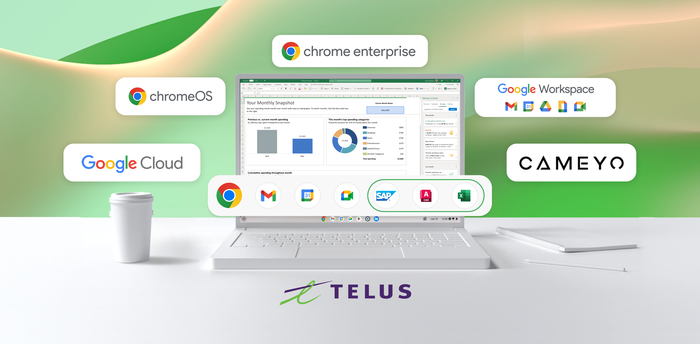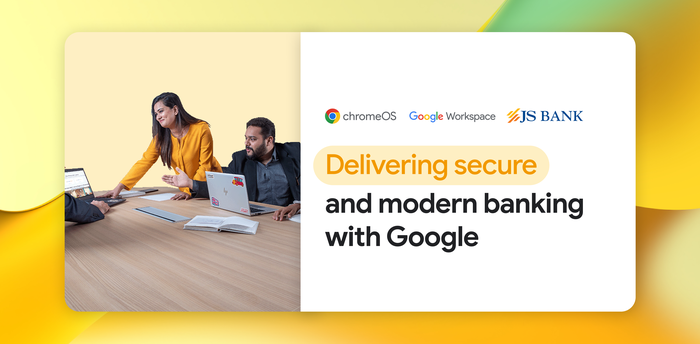How the Nerds at Nerdery do great work with ChromeOS

Samuel Kidder
IT Systems Engineer
Jim Buck
Vice President of Technology Enablement
Why digital consultancy Nerdery chose ChromeOS for its Nerds
Editor’s note: Today’s post is by Jim Buck, Vice President of Technology Enablement, and Samuel Kidder, IT Systems Engineer, both of Nerdery. The Edina, Minnesota company is a digital product and data platform company with 20 years of experience, bringing expertise across design, engineering, and analytics to harness the full potential of your data, craft exceptional digital experiences, and tap into cutting-edge technology. Nerdery adopted ChromeOS devices to improve employee productivity and reduce IT cost and complexity.
Employees at Nerdery, who are affectionately called “Nerds,” are more comfortablewith tech tools that don’t need constant managing and troubleshooting. We have to adapt to many different platforms and software tools that our clients choose. Since clients hire us for our IT expertise, our technology has to work 100% of the time—there’s no wiggle room for down time or breakdowns.
ChromeOS devices just work, without adding barriers to our already busy workloads. They’ve helped us create a company with time and money freed up for innovative client work instead of IT challenges.
Our high expectations for workplace technology
Because we’re digital experts, Nerdery employees are very discerning about the tech they use. If devices or software don't work correctly or run slowly, IT will hear about it. Employees are also measured by output, especially if we’re doing billable work for clients. If a device isn’t working right, or boot time is slow, they have to work longer hours to meet project deadlines.
About 70% of our employees work remotely, an outgrowth of the pandemic. That’s also a factor in how we choose platforms and devices. Remote Nerds need fast and reliable devices since IT help isn’t onsite.
Simple and secure
ChromeOS devices aligned with our philosophy to simplify—eliminating complexity and points of failure, while adding security.
We first introduced ChromeOS in our conference rooms. We replaced the Windows conferencing solutions with ASUS Chromeboxes running Google Meet. The results were impressive. Our teams raved about the reliability, fast boot up times, and uptimes. These features were incredibly important for us, especially in external meetings with clients.
The next step was to roll out HP and ASUS Chromebooks to workers, in departments such as sales, finance, and project management. With so many devices to choose from, we can give people exactly the right device that suits their needs with a much lower cost of ownership. A high-end Chromebook or Chromebook Plus device for people who need powerful devices costs about $1,000, while the equivalent Windows laptop would be about $2,800. This, combined with the incredible value of bundled endpoint management and reduced setup time has lowered our TCO by close to 80%.
When we were largely a Windows shop, we sought an OS that played well with the cloud. We found ChromeOS to be much more stable than Windows while requiring little to no troubleshooting. With our entire data center moved to Google Cloud Platform, and by switching from on-premise software to cloud solutions, we significantly reduced IT management time and cost and whittled trouble tickets down to just about zero.
In a two-year period, about 85% of our Windows devices had some level of critical failure—ranging from re-imaging to complete hardware failure. Today, with about 200 ChromeOS devices in use by our office and remote workers, less than 5% have ever required IT help.
Management is customizable
In keeping with our philosophy of simple but powerful technology, we’re loving ChromeOS management tools. We don’t need third-party software to manage the OS or devices, because all the tools are built into ChromeOS and the Google Admin console. We have visibility into our ChromeOS devices to know where they are and what they’re doing and we can do this all from a central location. With Zero Touch Enrollment, devices can be enrolled right out of the box and policies can be easily applied and customized.
There is so much versatility with ChromeOS devices. On one device, users can sign in with their username and pick up where they left off with all their data saved. Or we can host a managed guest session where data is wiped. Then there are shared devices like conference room Chromeboxes running kiosk mode or loaner Chromebooks, where people sign in to ephemeral sessions and data is not retained. Finally, there are edge cases where people need devices to serve a unique purpose, so they need their own policies. The management has proved to be very adaptable depending on our needs.
How IT became a “yes” team
We ran into very little pushback from our fellow Nerds about moving to ChromeOS devices. There’s always some handholding to be done with people who are apprehensive about leaving their favorite tools behind, but adaptation is quick and the teams are always happy with the ChromeOS platform.
Additionally, we’ve observed a new trend among the modern workforce: a growing demand for Chromebooks. Many of our nerds grew-up with school issued Chromebooks, making younger generations instantly comfortable using ChromeOS devices.
Our simple, affordable, and easy-to-manage technology is also helping IT to find more ways to partner with employees who are dreaming up new ways to serve clients or colleagues. In the past, our answer to out-of-the-ordinary requests was often it’s too much work or it’ll take too long. ChromeOS devices give us time back so we can say “yes” to the Nerds’ ideas faster and more often.



